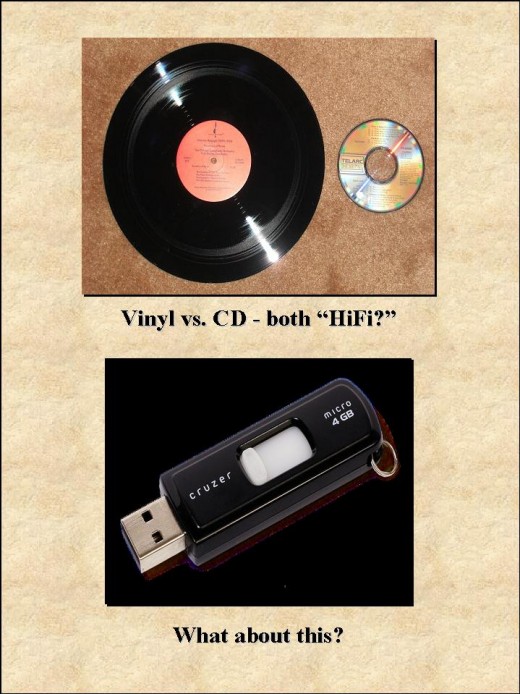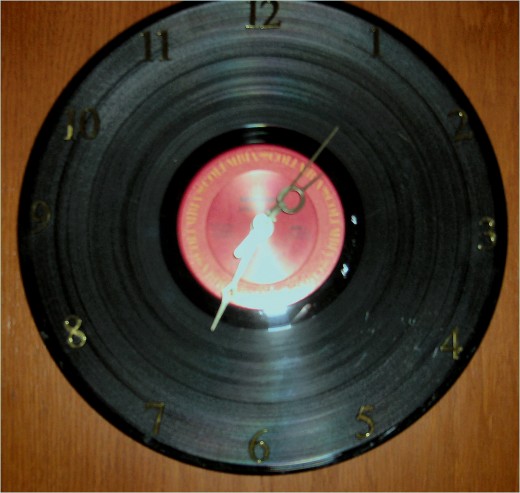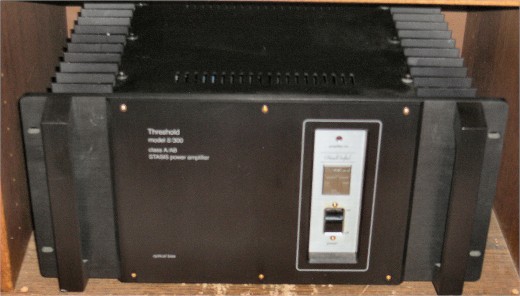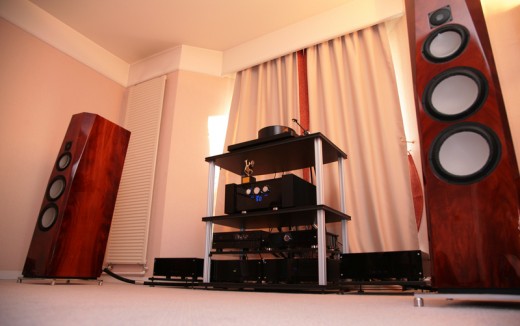Whither HiFi?


Way back in 1969, I purchased my first truly high-fidelity system (I’m speaking components here, as opposed to self-contained “record players,” ”HiFi consoles,” etc.). I was in the Army and the base had an audio club where I purchased a Dual turntable, an Akai receiver, and Fisher speakers. Hardly “high-end,” but it sure sounded good! I have since bought, sold, and traded dozens of audio components and the system I have now consists of components from such venerable brands as Threshold, Oracle, Adcom, Dahlquist, Velodyne, Nakamichi, Yamaha, dbx, and Teac. (And I still have a Dual changer, but not the same one!). If I had to purchase my current system today all at once, I couldn’t afford it. But it sure sounds good!
I have approximately 1200 or so LPs, and probably 300-400 CDs, and I don’t know how many cassettes and open reels of tape (I still love open reel; it’s a pain in the neck to use, but the sound is excellent). Back in the 1980s, compact disks came along and everyone thought this meant, to quote one of the ads, “perfect sound forever.” Well, not quite. I thought the early CDs (and the players) sounded bright and the sound kind of . . . mechanical. The sampling rate for CDs had a fixed upper limit of 44khz, meaning a sharp drop-off after 22khz (with respect to frequency response). It was maintained at the time the humans could not hear frequencies above this limit so it didn’t matter. Wrong! It turns out that harmonics above 22khz do affect what we hear and the “brick wall” presented by the 44khz upper limit was one of the factors responsible for the rather uninvolving sound of many CDs. Lo and behold, manufacturers started “oversampling” in order to compensate for this effect. (A few years ago, one high-end manufacturer advertised a CD player with a slogan something like “Finally, CD sound as good as vinyl!” I guess we’ve come full circle!)
Today’s CDs (and CD players, especially the high-end players) sound much better than the early samples and SACD (super-audio CD) is better yet. I have to say, however, vinyl still sounds better, at least in my opinion. (I have a 24-year old stepson who feels the same way, even though our musical tastes are VERY different, so this is not just an “old-fogy” phenomenon!) But today’s “audio” equipment is not just about CD vs. records or tape any more. I get a catalog at least once a month from a purveyor of high-end audio and the first ten pages are usually chock full of “network audio players,” “digital music players,” “streaming audio receivers,” and iPod players. There are usually a few pages to digital-to-analog converters (DACs) which are necessary if the human ear is to hear anything recorded digitally. Virtually all these gizmos have USB connections to “interface” with a computer.
Now I know lots of people have iPods, iPads, MP3 players and the like, but what in hell does this have to do with HiFi? This is drastically compressed musical information stored on tiny little hard drives and then played through (ostensibly) HiFi equipment. Yeah, they sound ok, but “HiFi” they ain’t. If one were to take a walk into a large “big box” store, such as Target and Best Buy, one would be hard pressed to find any truly audio gear. It’s all home theatre, “boom boxes,” and micro-systems with the ubiquitous iPod dock. When is the last time you saw a good old, stereo receiver in a store? Now I know today’s music (if such it can be called) consists of three or four minute long pop tunes with a minuscule dynamic range (i.e., the difference between the softest and loudest parts) and is perfect for these new gizmos. (Ever notice the advertising for these digital players? “Holds up to 1000 songs.” “Songs?” How about symphonies, concerti, operas, or even arias? Sigh.) By the way, speaking of pop music, what ever happened to rock n’ roll? I guess that’s a topic for another article.
Well, I guess I’ll keep listening to my record, tape, and CD collection through my audio system and leave the iGizmos to the younger generation. Tell you what, though -- any of you reading this wondering what the “high-end” is all about, drop into an AUDIO store (i.e., an establishment dealing in true audio equipment - look around, you’ll find them here and there) and sit down and LISTEN. You’ll see (and hear) what I mean. In the meantime, whatever your pleasure, good listening!

The "High-End"

- High Fidelity, Today's Music, and Today's Listening Habits
Young people today listen to music on digital gizmos instead of high-fidelity systems. Further, for them music is a soundtrack, listened to as they do other things.
Find out more about me at my website:
- http://www.alexdrinkwater.com/
This is the website of Alex Drinkwater, Jr., author of fiction. including the novels "The Ghosts of Hanoi," and "Duly Constituted Authority."








